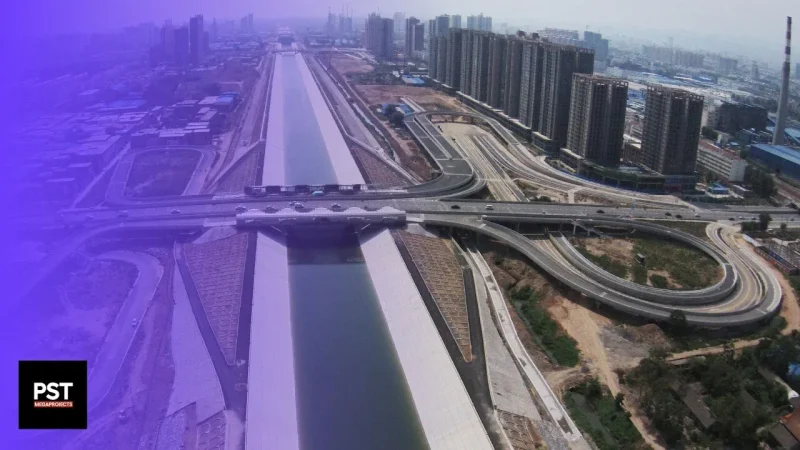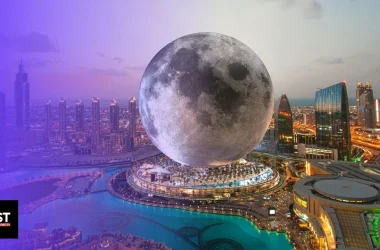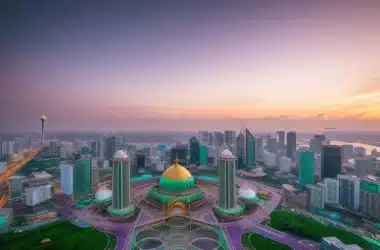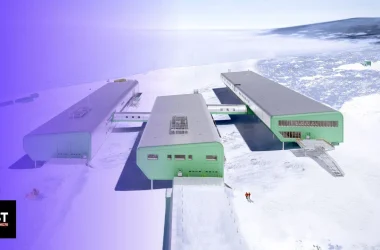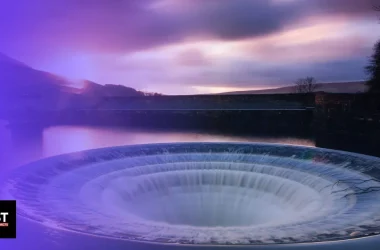Southern China enjoys the water and fertile land brought by its many water resources, such as the Yangtze River. On the other hand, the northern region, where Beijing, lies suffers from aridity and desertification, with no natural water resources to be found.
Despite that, Beijing never faced a water shortage in the severely drought-stricken year of 2017. This raises the question of where the water came from.
Thanks to a massive $60 billion massive infrastructure project, Beijing’s water mostly comes from a city in the south separated from it by over 1,200 km of land!
The story of this ongoing water transportation project is the story of humanity defying nature, by digging and carving through literal mountains, to move water thousands of kilometers from the water-rich Southern region of China to its arid Northern region. This story, along with the costs and benefits of this miraculous engineering project, is worthy of a more detailed look.
China’s Water Problems
China’s severe pollution issues are well-known to most. Many of China’s cities, like Xinxiang, are among the worst in the world in terms of air quality and industrial pollution. But you’ll likely be surprised to find out that the biggest challenge facing the nation’s rapid growth and population of 2 billion people is actually water scarcity.
It is puzzling how China, a nation known for having an especially strong agriculture sector, is suffering from a water shortage problem. After all, China’s agricultural economy is actually the strongest in the world, producing 20% of the entire world’s food. A look at the country’s geography, however, may help shed more light on the cause of the problem.
The southern region of China is blessed with the Yangtze and Yellow rivers. The Yellow River’s bank alone is one of the largest and most developed agricultural lands in the world, and the Yangtze River is the third largest in the world. In addition, the region is filled with fertile floodplains. As a result, the population of China has been flourishing for thousands of years. Southern China is where the vast majority of its agricultural production comes from.
On the other hand, the northern and far western regions are dry and mountainous. In addition to the famous Himalayas and the Tibetan Plateau, the Gobi and Taklamakan deserts occupy much of the area there. The overall result of this uneven natural division of China’s land is a likewise uneven distribution of the country’s population: almost 94% of Chinese people live in the southeastern half of China!
The Historical Roots of the Project
The problem would have been tolerable if not for the rapid industrial growth and the consequent expansion of the population which China saw in the 20th century. It was clear early on that the northern part, which only relied on groundwater and rain at the time, would eventually have to face an increased water demand. This is why Mao Zedong, displaying an early awareness of the problem, famously said in 1952 that “water in the south is abundant, water in the north scarce. If possible, it would be fine to borrow a little.”
The solution of transporting water from the south to the north would later turn out to be far from simple, despite what Mao’s words may make it sound like. His suggestion became a reality exactly fifty years later, when China’s state council approved the beginning of the construction of what was later officially called The South-North Water Diversion Project. The decision came after years of extensive planning and research.
The plan was basically to create a mind-bogglingly large series of artificial structures, like canals and dams, to move fresh water from its main sources in the south and store it in the northern areas where it’s needed most, like Beijing.
The Current Developments
The project consists of three stages, the first two of which have already been completed, and the third, by far the most challenging and troublesome, is in the planning stage.
Each stage is essentially a water transportation route: the first is the eastern one. The route begins near the city of Yangzhou, which lies at one of the branches of the Yangtze river. There, a massive pumping station diverts the water from the Yangtze river into the Jing-Hang Grand Canal, which is the world’s largest artificial waterway in its own right.
The station and the canal are not the only impressive parts of this route, because there’s also an underground tunnel that stretches under the Yellow River, bringing the water across. Eventually, the water reaches its final destination, the city of Tianjin, through a series of aqueducts. The total length of this route is over 1,100 km long.
The construction process took roughly 15 years. It began in 2002 and was initially projected to end in 2013, but, unsurprisingly, the process turned out to be quite difficult and finally ended in 2017 instead, when fresh water finally reached the citizens of Tianjin with an estimated volume of over a billion cubic meters per year, benefiting 10 million people.
As impressive as the eastern route is, the central route is even more important and challenging. It’s more important because its capacity is much higher: by 2030, the route is projected to deliver over 12 billion cubic meters of water per year to the capital Beijing as its capacity expands. It’s more challenging, though, as the entirety of the infrastructure was built from the ground up for this project. This is in contrast to the eastern route, some of the infrastructure, like the pumping station and some canals, was already existing and only needed improvement. The challenge never deterred China, however, given that the route, currently stretching over 1200 km, was finished in 2014.
Finally, there is the western route. It’s still in the planning stage, but it’s also where the water diversion project gets quite interesting. The plans for this route include connecting the Yangtze River to the Yellow River through the Qinghai-Tibet plateau. If you’re wondering what could go wrong here, keep in mind that this plateau is around 3 to 5 kilometers high!
The height is not the only problem, though. The topography and snowy climate of the plateau make it quite difficult for humans to live or move there, much less try to build a huge construction project. Worse still, the route will also require China to carve through a mountain. The costs and the engineering problems that China would face while trying to bring large construction equipment and a big group of construction workers up very tall and snowy mountains would be beyond belief.
Construction is predicted to end in 2050. While this may seem like an overly far point into the future, it isn’t really surprising now that we know how challenging this route will be. When it’s finished, not only will it be a massive socio-economic boost for the Chinese population by providing access to an estimate of 100 million people, but it will also be a miracle of engineering and a testament to humanity’s ever-growing ability to tame nature.
Socioeconomic and Environmental Costs
Overall, the South to North Water Diversion Project currently serves a total of over 140 million people. But it isn’t without its costs. It is estimated that around $62 billion have been invested in this project so far, making it one of the most expensive human undertakings ever. Some even believe the number could be higher; as high as $80 billion or more. This is only the construction cost, which doesn’t account for the billions and billions of dollars China will have to spend in order to regularly maintain the gigantic infrastructure stretching all over the large country.
This isn’t the end of the story, however. The economic costs of this project, though extremely high, are understandable and probably completely justifiable in light of the invaluable resources it provides to millions of people. Not to mention, of course, the eventual agricultural boost. But a project of this scope also comes with human and environmental sacrifices, not just economic ones.
Indeed, the water diversion project has been controversial because a number of people, including scientists and engineers in addition to some ordinary Chinese citizens, believe it’s harmful for the environment and many people’s lives for a number of reasons.
First, during the construction of the central route, the Danjiangkou dam had to be raised over 15 meters, in order to allow water to flow north more easily from the main water resources in Danjiangkou, the route’s beginning. Over 300,000 people were relocated from their homes in order for that to happen. There is fear that this may keep happening in many places as the routes expand further.
Second, some people are doubtful that the project is the best available solution to Northern China’s water problems and believe it may have created more problems than it solved. This is because the project artificially redirected the flow of many rivers, leading to some of them drying up almost completely. The Yangtze River, as large as it is, may be immune to the effects, but many smaller water resources aren’t.
In addition, locals in the southern areas where water has been diverted are understandably worried, since the amount of water they have has been decreasing.
Third and finally, since these routes run through major cities, they have been affected by China’s population problem. Factories and citizens alike dump some of their waste into the water, polluting it. Moreover, there are concerns about the possibility of sea water leaking into the routes due to their design and proximity to the yellow sea.
It seems then, that the project has some downsides. Whether the benefits, which cannot be ignored, justify the costs, is something to be seen in the future.
Disclaimer
Please visit and read our disclaimer here.





